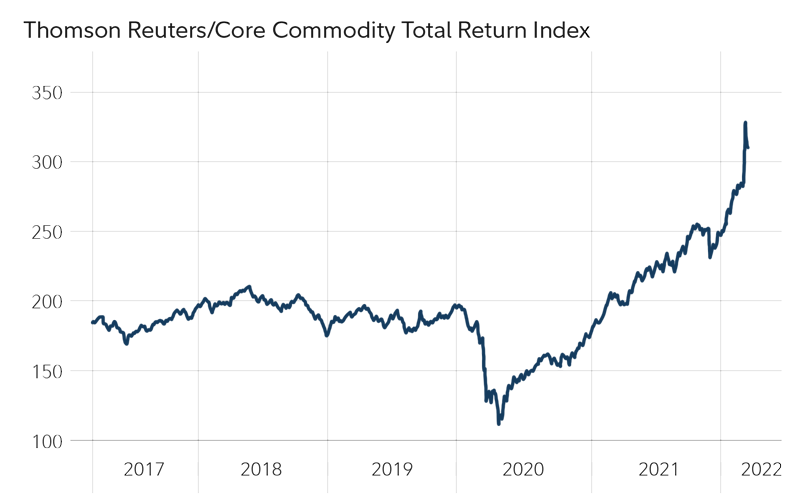
Exploring the Dynamics: Understanding Commodity Price Trends
Commodity prices are integral to global economic landscapes, influencing industries, investments, and consumer costs. In this exploration, we delve into the multifaceted world of commodity prices, uncovering the factors that drive trends and the broader implications for various stakeholders.
Commodities 101: A Diverse Marketplace
Commodities encompass a vast array of goods, from agricultural products like wheat and soybeans to energy sources like oil and natural gas. Metals such as gold and copper also fall under this category. Each commodity has its unique market dynamics, influenced by factors ranging from weather patterns and geopolitical events to technological advancements and global demand trends.
Supply and Demand: The Cornerstone of Pricing
At the heart of commodity price trends lies the fundamental principle of supply and demand. When demand exceeds supply, prices rise, and vice versa. Factors such as population growth, economic development, and shifts in consumer preferences can significantly impact the balance between supply and demand, leading to fluctuations in commodity prices.
Weather Patterns and Agricultural Commodities: Nature’s Influence
For agricultural commodities, weather patterns play a pivotal role in determining prices. Droughts, floods, and other weather extremes can affect crop yields, directly impacting supply. The unpredictability of weather patterns introduces an element of risk for farmers, traders, and industries reliant on agricultural inputs.
Energy Markets: Geopolitics and Beyond
In the realm of energy commodities like oil and natural gas, geopolitical events wield considerable influence. Political instability in oil-producing regions, decisions by major oil-producing nations, and global energy consumption patterns all contribute to the intricate dance of energy commodity prices. Understanding these geopolitical dynamics is essential for stakeholders in the energy sector.
Metals and Industrial Commodities: Economic Barometers
Metals such as gold, silver, and copper often serve as economic barometers. Gold, a traditional safe-haven asset, tends to see increased demand during times of economic uncertainty. Copper, on the other hand, is closely tied to industrial activities, making it a key indicator of economic health. Monitoring these metal prices provides insights into broader economic trends.
Technological Advances: Shaping Commodity Markets
Technological advancements have a profound impact on commodity markets. Innovations in agriculture, mining, and energy extraction processes can influence production efficiency and supply. Additionally, emerging technologies like electric vehicles can create new demand patterns for commodities such as lithium and cobalt. Staying abreast of these technological shifts is crucial for anticipating future commodity price trends.
Global Trade and Commodity Prices: Interconnected Realities
The interconnected nature of global trade further amplifies the impact of commodity prices. Changes in commodity prices can influence trade balances, impact currency values, and create ripple effects across various industries. As nations engage in trade partnerships, commodity prices become a key consideration in negotiating favorable economic terms.
Environmental Considerations: Sustainable Commodities
Increasingly, environmental considerations are shaping commodity markets. The demand for sustainably sourced and produced commodities is on the rise. Companies and consumers alike are placing emphasis on environmentally friendly practices, influencing purchasing decisions and, in turn, commodity prices. This shift towards sustainability introduces new dynamics to commodity markets.
Investor Strategies: Navigating Commodity Markets
Commodity prices offer unique investment opportunities and risks. Investors often include commodities in their portfolios as a hedge against inflation or as a diversification strategy. However, the inherent volatility in commodity markets requires careful risk management and a deep understanding of the factors driving price trends.
Linking Knowledge to Action
Stay informed about the latest commodity price trends at Commodity Prices. This resource provides real-time insights and analysis, serving as a valuable tool for businesses, investors, and individuals navigating the dynamic and interconnected world of commodities.
Conclusion: Navigating the Commodity Landscape
In conclusion, navigating commodity price trends requires a nuanced understanding of the diverse factors at play. From agricultural commodities sensitive to weather patterns to metals influenced by economic indicators, the commodity landscape is dynamic and multifaceted. Stakeholders armed with knowledge, insights, and resources like Commodity Prices can adeptly navigate the complexities of this crucial aspect of the global economy.